Needles and horses usually aren’t anyone’s favorite mix, but if you’re around horses long enough, chances are you may need to give your horse an intramuscular (IM) injection. Knowing the key principles behind this procedure will make it much safer and easier for both you and your horse. Let’s take a closer look.
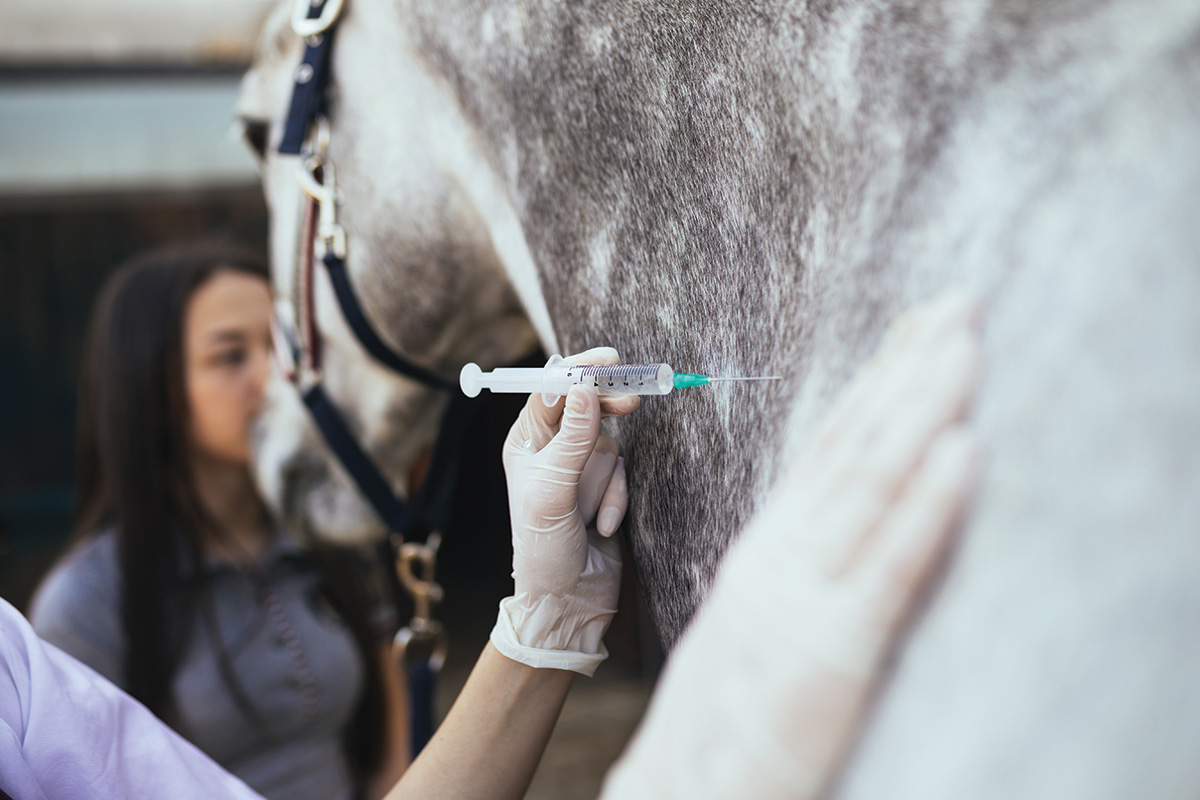
Visualize the Triangle
In horses, one of the most common and preferred sites for IM injections is the side of the neck. Chances are you’ve probably seen your veterinarian use this site. But the neck of a horse is a wide, flat structure—how do you know exactly where to stick the needle?
An easy way to know for sure is to find the “triangle” formed by three structures in the neck. The nuchal ligament forms the first border; this is the thick ligament that runs from the poll to the withers and holds up the mane. The injection should be below the nuchal ligament.
The second border is made up of the cervical vertebrae (neck bones). This is a little trickier; many people actually mistake the nuchal ligament for the horse’s spine. However, the spinal column in the neck drops almost straight down from the poll and curves at the bottom to meet the thoracic vertebrae at the point of the shoulder.
Finally, the injection should be in front of the shoulder blade, which you can feel if not see. Within these three borders you’ll have a space roughly the size of your open hand. This is where you should give the injection.
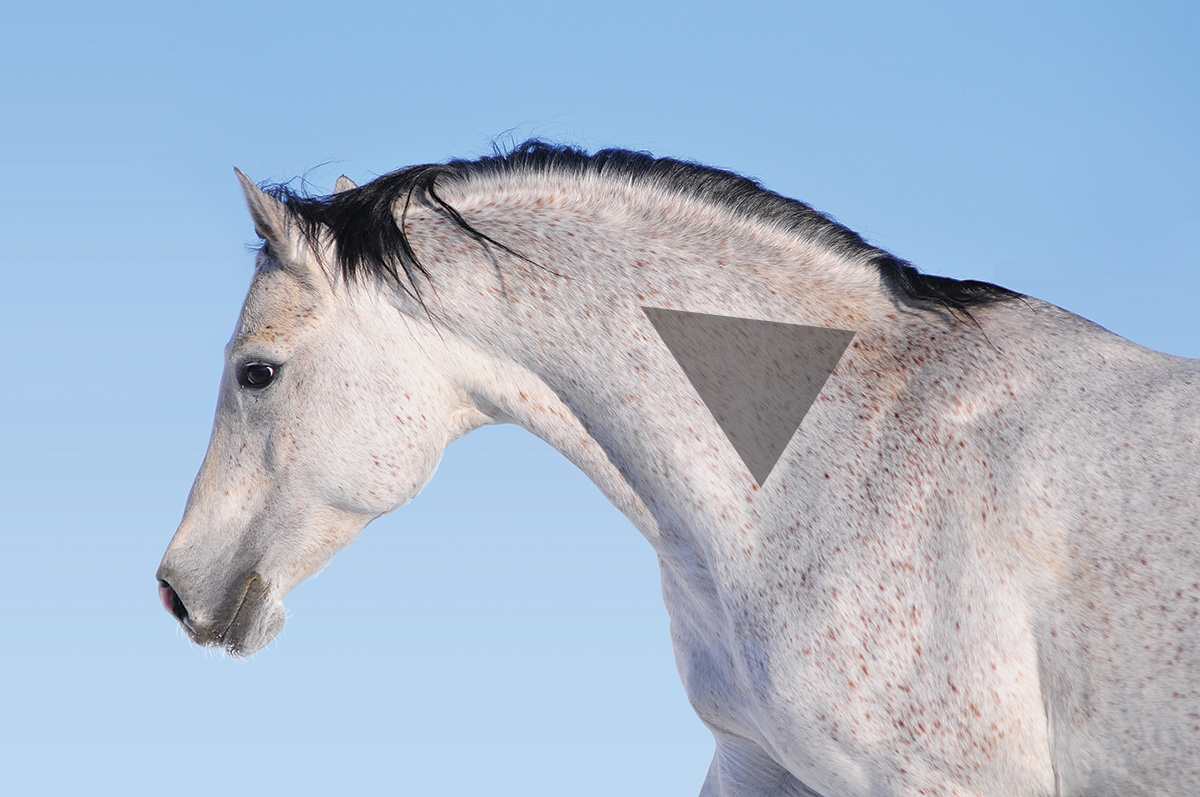
The neck is the most frequently used site for IM injections due to its accessibility, but there are other locations you can consider. The pectoral muscles in the chest are another convenient location. If used, make sure to stand to the side of the horse, not directly in front, and aim for the center of one of the pecs.
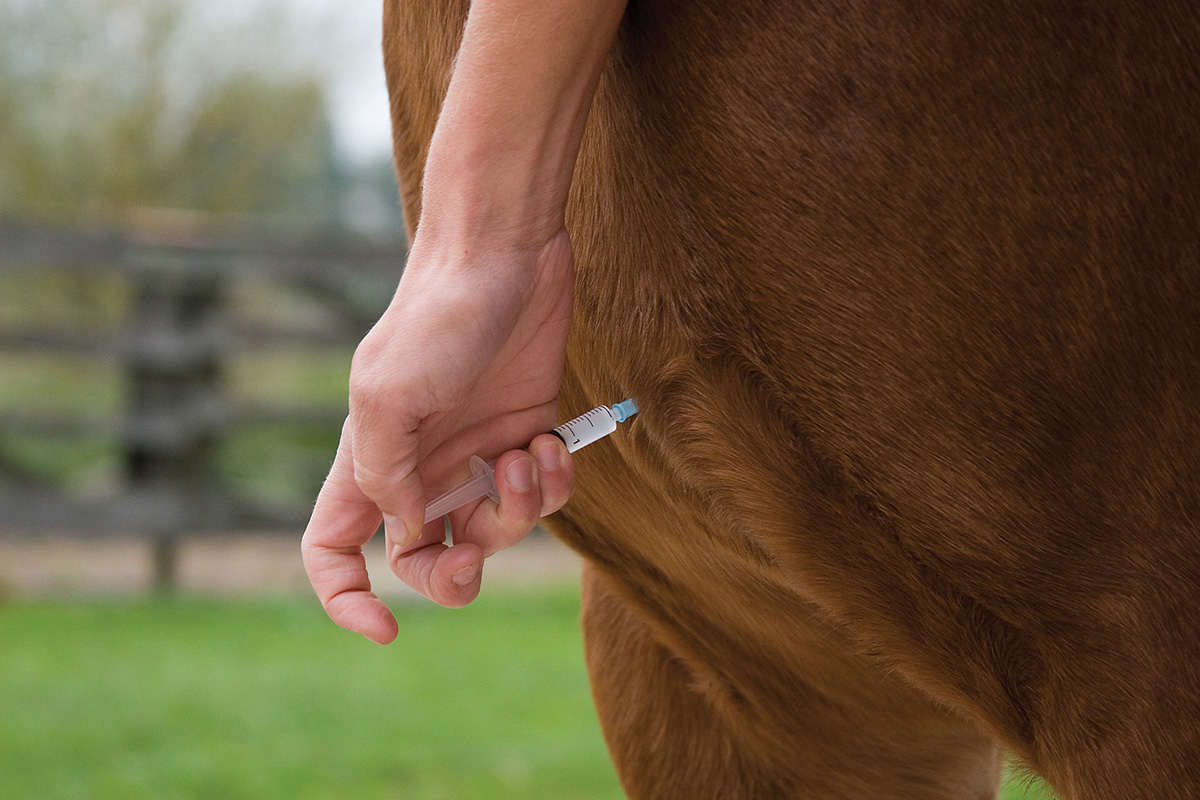
The hamstrings are also an option, but serious consideration to your safety must be made: As you might imagine, injections near the hindquarters put you in danger of being kicked. Rarely are the gluteal muscles used. Although the tops of the haunches are a nice large muscle mass, if infection occurs and an abscess needs to be lanced, this area provides poor drainage.
The Technique for an Intramuscular Injection
When giving any medication to your horse, first start by confirming the following three things:
◆ Is it the correct drug?
◆ Is it the correct dose?
◆ Is it the correct delivery method?
Once you’ve confirmed all three, pick your injection location. Make sure the horse’s skin is dry and free of dirt and grime. Next, with your horse wearing a halter, have a handler hold the lead rope and stand on the same side as you.
Always use a new needle for every injection. Never share needles between horses to prevent the spread of disease and dulling of the needle.
Deliberately insert the needle perpendicular to the skin and all the way to the hub. Do this in a firm and quick movement. Some people like to desensitize the horse first with a pinch of the skin or a few taps of your hand prior to the stick. Using these tricks will depend on the horse and the location you choose.
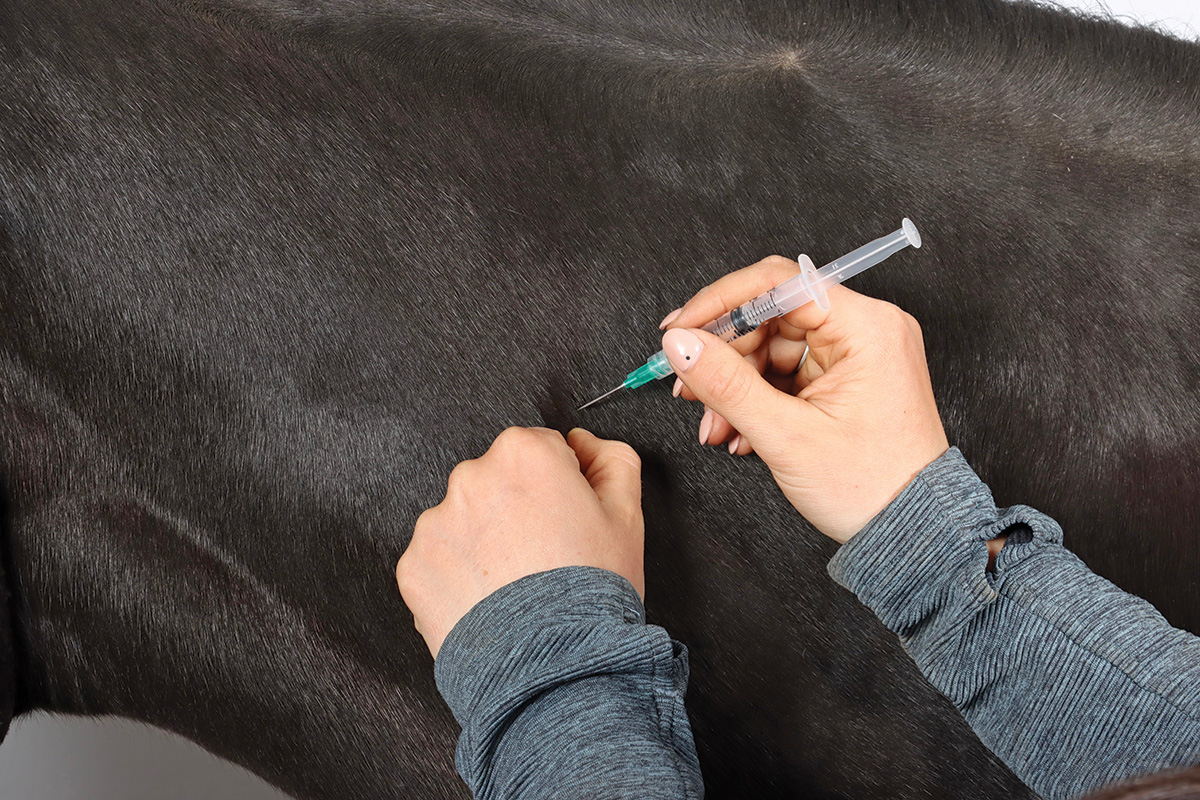
Once the needle is fully inserted, pull back on the plunger slightly; this is a good habit to ensure you’re not in a small blood vessel. If there is blood in the hub, pull out the needle and slightly redirect. Once you confirm there is no blood, depress the plunger steadily until empty, then pull the syringe out. There should be minimal if any blood on the skin.
Once you’ve given the injection, be sure to safely dispose of the used needle. Although you can purchase a specific container for sharps disposal at a pharmacy (like those red tubs you see at hospitals), any hard plastic tub with a secure lid will do. Laundry detergent bottles or coffee canisters with fitted lids work very well. Mark the container with a label, like “Sharps,” so that everyone is aware of its contents.
Possible Complications
Troubleshooting injection site reactions and infections are the two biggest risks when giving an IM injection. Reactions tend to occur despite good aseptic technique; this is the immune system’s reaction to the drug and can range from a small lump and temporary muscle soreness to hives or anaphylactic shock.
If your horse is known to be sensitive to certain types of medications, talk with your veterinarian before giving him an IM injection on your own.
Some medications are known to be more irritating to muscle than others; for this reason, always contact your veterinarian before giving a drug IM that you don’t have experience giving.
NOTE: Not all drugs can be given in the muscle; phenylbutazone (bute) is a prime example. Injectable bute should only be given intravenously (IV) by a person experienced in giving IV injections. Bute should never be given IM, as it causes severe tissue damage.
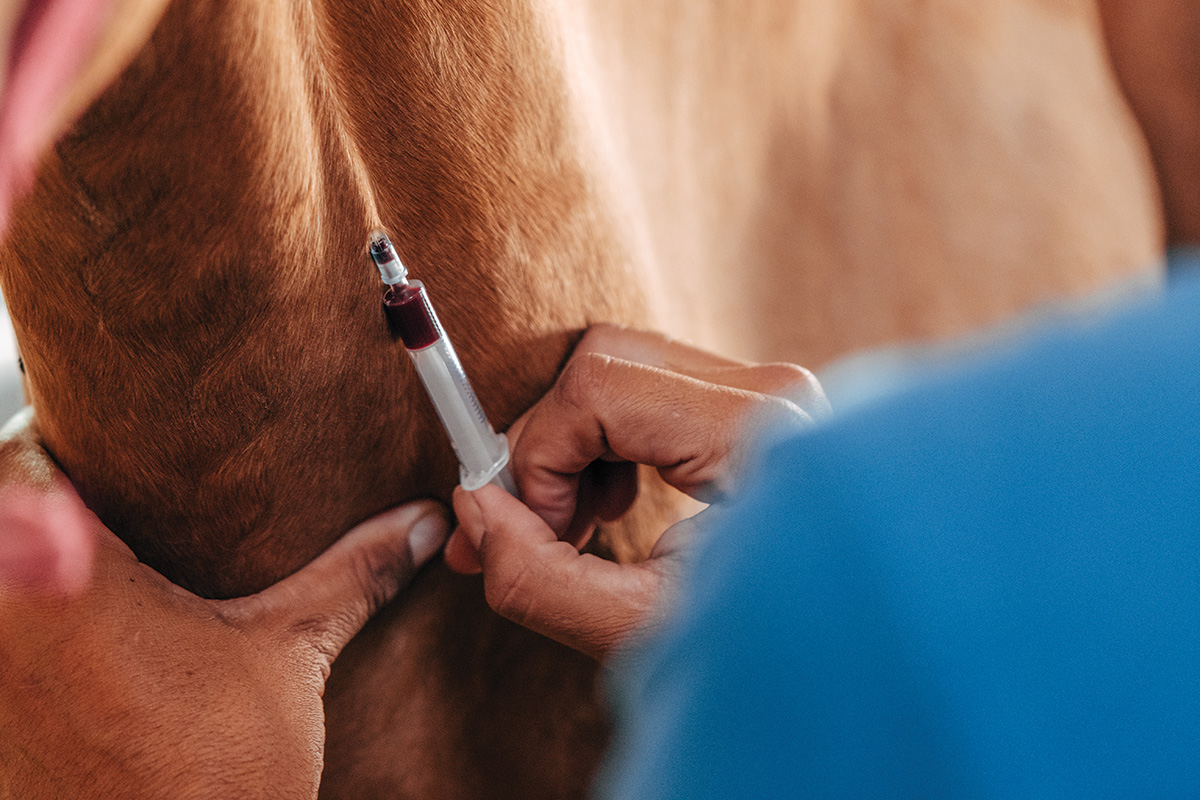
An infection, usually evidenced by an abscess at the injection site, can be avoided by using clean, sterile needles and syringes and injecting with the correct technique through clean, dry skin.
If an infection does occur, the site will swell and become hot and painful to the touch. The horse may have a fever and go off feed. Abscess formation requires draining for complete healing and a veterinarian should be called to do this. Antibiotics and pain medications are typically prescribed.
One rare but serious complication from IM injections is the risk of Clostridial myositis. This is a deadly bacterial infection from Clostridium bacteria. These bacteria and their spores are ubiquitous in the environment and are also in the horse’s intestinal tract.
Sometimes a deep intramuscular injection can create the perfect anaerobic environment that triggers these spores to activate, resulting in a severe systemic infection in the horse that can quickly progress to septic shock. Being knowledgeable of the drug you are administering is helpful in preventing these cases. When in doubt or unsure, always check with your veterinarian first.
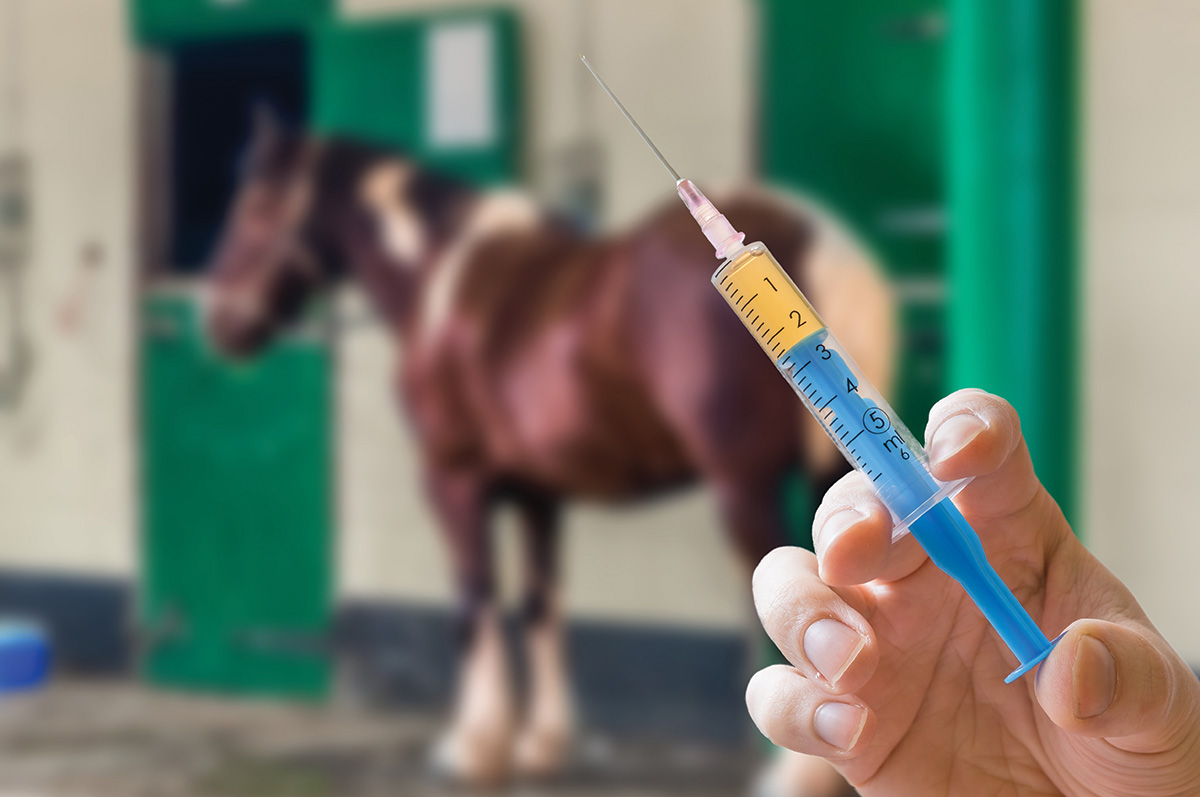
When To Administer an Intramuscular Injection
Although some of the risks involved with giving a horse an intramuscular injection are serious, be assured that some common medications can be safely administered in the muscle of horses. These include certain antibiotics, such as penicillin and gentamicin, as well as sedatives and tranquilizers like xylazine and acepromazine, and vaccines.
Although the non-steroidal anti-inflammatory drug (NSAID) flunixin meglumine, also known as Banamine, is approved for IM injection in horses, it has been associated with Clostridial myositis. For this reason, Banamine is safer when given IV or orally.
For any medication you have never given IM or are unsure of, always call your veterinarian prior to administration.
IM injections are a useful basic medical skill to have as a horse owner. With knowledge, practice, and someone to help hold your horse, you can confidently add this to your horsemanship toolkit.
This article about giving a horse an intramuscular injection appeared in the March 2023 issue of Horse Illustrated magazine. Click here to subscribe!





